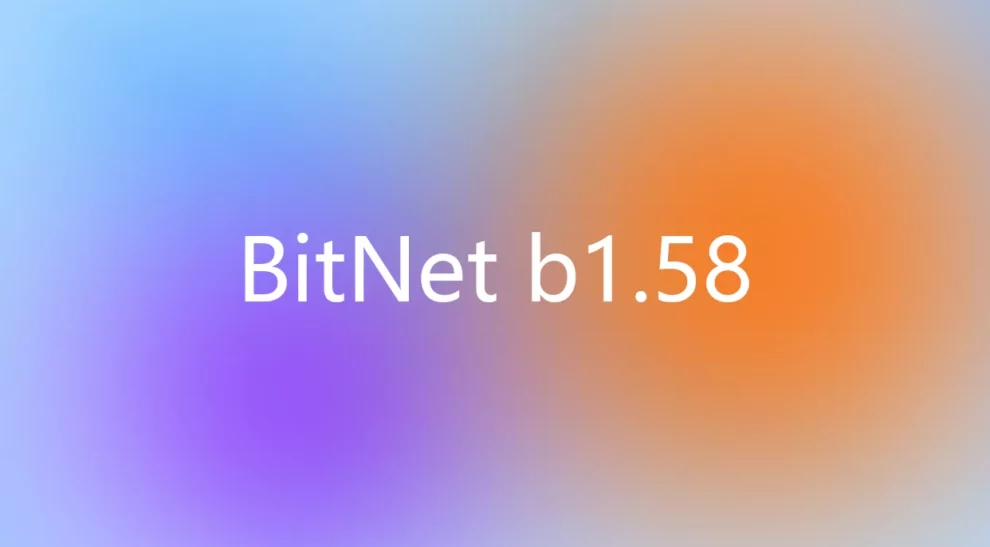The quest for efficiency and scalability has led researchers to explore innovative methods for optimizing neural networks. At the forefront of this movement is Microsoft’s General Artificial Intelligence group, which recently unveiled BitNet b1.58, a groundbreaking neural network model that operates with just three distinct weight values: -1, 0, and 1. This ternary architecture represents a significant departure from traditional models that rely on 16- or 32-bit floating-point numbers, marking a pivotal moment in the field of AI research.
Breaking Down the Basics
Traditional AI models require substantial memory and processing power due to their reliance on high-precision floating-point numbers. This necessity arises from the need to accurately represent the complex relationships within neural networks, which are essential for tasks ranging from natural language processing to image recognition. However, this precision comes at a cost, particularly when dealing with large-scale models. Memory footprints can exceed hundreds of gigabytes, and the computational demands for matrix multiplication during inference can be prohibitively expensive.
Enter BitNet b1.58, a ternary neural network that simplifies the weight representation to just three values. This reduction in complexity not only minimizes memory usage but also significantly boosts computational efficiency. The researchers describe the model as achieving “substantial advantages in computational efficiency,” enabling it to run effectively on a simple desktop CPU. Despite its streamlined architecture, BitNet b1.58 maintains performance comparable to leading open-weight, full-precision models of similar size across a wide range of tasks.
A Historical Perspective
The concept of simplifying model weights isn’t entirely new. Researchers have long experimented with quantization techniques to compress neural networks into smaller memory envelopes. Recent advancements have focused on “BitNets,” which represent each weight as a single bit (+1 or -1). While these models offer impressive efficiency gains, they often suffer from significant performance degradation compared to their full-precision counterparts.
BitNet b1.58 stands out by being the first open-source, native 1-bit LLM trained at scale. This “native” approach ensures that the model is optimized for ternary weights from the ground up, avoiding the pitfalls of post-training quantization. The researchers emphasize that previous attempts to quantize pre-trained models often resulted in degraded performance, whereas BitNet b1.58 maintains parity with full-precision models in its size class.
Memory and Energy Efficiency
One of the most compelling aspects of BitNet b1.58 is its drastically reduced memory footprint. Traditional models require anywhere from 2 to 5 gigabytes of memory, while BitNet b1.58 operates using just 0.4GB. This reduction not only lowers hardware requirements but also opens the door to deploying AI models on more modest computing platforms.
Equally impressive is the model’s energy efficiency. Internal operations rely heavily on simple addition instructions, sparing the computational resources needed for costly multiplication operations. As a result, BitNet b1.58 consumes between 85 and 96 percent less energy compared to similar full-precision models. These efficiency improvements make the model particularly appealing for edge devices and resource-constrained environments.
Speed and Performance
The BitNet b1.58 model achieves speeds comparable to human reading (5-7 tokens per second) using a single CPU. This remarkable performance is made possible by a highly optimized kernel specifically designed for the BitNet architecture. The researchers invite users to download and run these optimized kernels on various ARM and x86 CPUs, or even try the web demo. This accessibility democratizes the use of advanced AI models, making them available to a broader audience.
Benchmark Results
While the model’s energy efficiency and speed are impressive, its performance on various benchmarks is equally noteworthy. The researchers claim that BitNet b1.58 achieves capabilities nearly on par with leading models in its size class, demonstrating its ability to handle tasks requiring reasoning, mathematical prowess, and knowledge retrieval. Averaging results across several common benchmarks, the model’s performance is described as being “nearly on par” with its full-precision counterparts.
Theoretical Underpinnings
Despite its success, the researchers admit that the underlying reasons for BitNet b1.58’s effectiveness remain unclear. Delving deeper into the theoretical underpinnings of why 1-bit training at scale is effective remains an open area,” they write. Further research is needed to understand the mechanisms that allow such a simplified model to maintain high performance. This exploration could pave the way for even more efficient and scalable AI solutions in the future.
Implications for the Industry
The advent of BitNet b1.58 has significant implications for the AI industry. As models continue to grow in size and complexity, the associated hardware and energy costs become unsustainable. BitNet b1.58 offers a potential solution, suggesting that today’s “full precision” models might be akin to muscle cars that waste energy unnecessarily. A more efficient sub-compact model could deliver similar results, making AI more accessible and sustainable.
Microsoft’s General Artificial Intelligence group has delivered a paradigm-shifting innovation with BitNet b1.58. By reducing the complexity of neural network weights to just three values, the researchers have achieved remarkable efficiency gains without compromising performance. This ternary architecture represents a promising direction for AI, offering a pathway to more sustainable and scalable models. As the industry grapples with the challenges of spiraling hardware and energy costs, BitNet b1.58 stands as a beacon of hope, heralding a future where AI can thrive without straining resources.
















Add Comment